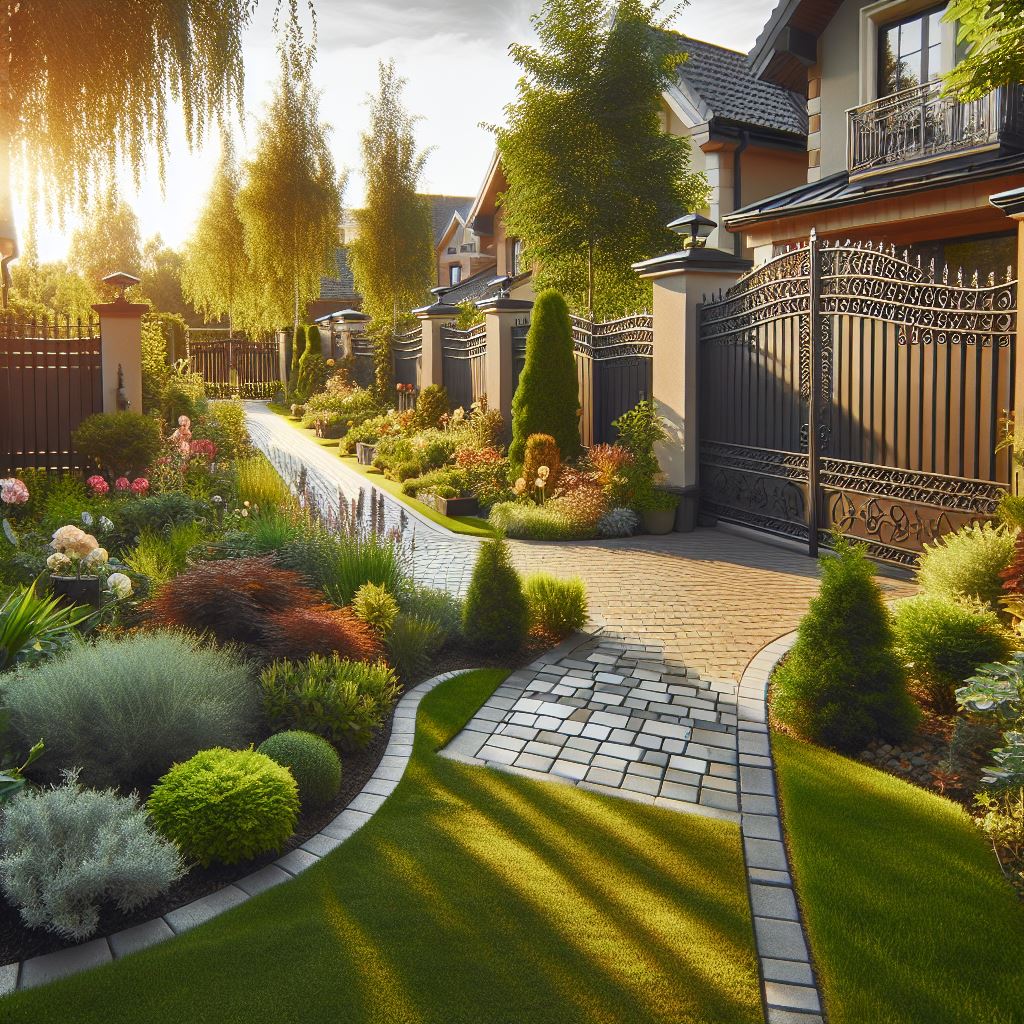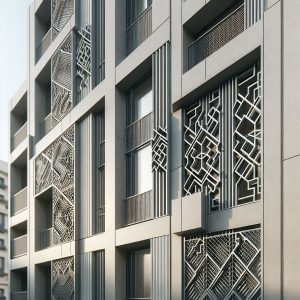Perimeter security is a critical aspect of safeguarding any property, whether it’s a residential home, commercial establishment, or industrial facility. Effective perimeter security involves a combination of physical barriers, access control measures, and strategic landscaping to deter unauthorized access and protect against potential threats. In this comprehensive article, we will explore the various components of perimeter security, focusing on fencing, gates, and landscaping.
1. Fencing
Fencing is the first line of defense in perimeter security. It serves as a physical barrier that defines the boundaries of a property and restricts unauthorized access. There are several types of fencing materials and designs to choose from, each with its own advantages and considerations.
a. Chain-Link Fencing
Chain-link fencing is one of the most common and cost-effective options for perimeter security. It consists of interwoven steel wires that form a diamond pattern, providing a durable and transparent barrier. Chain-link fences are easy to install and maintain, making them a popular choice for both residential and commercial properties. However, they may not offer the highest level of security as they can be easily cut or climbed.
b. Wrought Iron Fencing
Wrought iron fencing is known for its strength, durability, and aesthetic appeal. It is often used in high-security areas and properties that require an elegant appearance. Wrought iron fences are difficult to breach and can be customized with decorative elements. However, they are more expensive than other fencing options and require regular maintenance to prevent rust and corrosion.
c. Wooden Fencing
Wooden fencing provides a natural and attractive barrier for residential properties. It offers privacy and can be customized to match the architectural style of the property. Wooden fences can be constructed from various types of wood, such as cedar, pine, or redwood. While wooden fencing is aesthetically pleasing, it requires regular maintenance, including staining or painting, to protect against weathering and decay.
d. Vinyl Fencing
Vinyl fencing is a low-maintenance and durable option for perimeter security. It is resistant to weathering, insects, and rot, making it a long-lasting choice. Vinyl fences come in various styles and colors, allowing for customization to suit the property’s design. However, vinyl fencing can be more expensive than other materials and may not provide the same level of security as metal options.
e. Electric Fencing
Electric fencing is commonly used in high-security areas, such as military installations, prisons, and industrial facilities. It delivers a non-lethal electric shock to anyone attempting to breach the fence, serving as a strong deterrent. Electric fences can be combined with other fencing materials for added security. However, they require regular maintenance and monitoring to ensure proper functionality.
2. Gates
Gates are an essential component of perimeter security, providing controlled access to the property. The type of gate chosen depends on the level of security required, the frequency of use, and the property’s design. Here are some common types of gates used in perimeter security:
a. Swing Gates
Swing gates are a popular choice for residential and commercial properties. They operate by swinging open and closed on hinges, similar to a door. Swing gates can be single or double-leaf, depending on the width of the entrance. They are available in various materials, including metal, wood, and vinyl. While swing gates are easy to operate and install, they require sufficient space to open fully.
b. Sliding Gates
Sliding gates are ideal for properties with limited space. They operate by sliding horizontally along a track, making them suitable for narrow entrances. Sliding gates are commonly used in commercial and industrial settings due to their durability and ease of automation. However, they require regular maintenance to keep the track clear of debris and ensure smooth operation.
c. Bi-Folding Gates
Bi-folding gates consist of two or more panels that fold back on themselves when opened. They are a space-saving option for properties with limited room for swing or sliding gates. Bi-folding gates are often used in commercial and industrial settings where quick access is required. They can be automated for added convenience and security.
d. Barrier Arm Gates
Barrier arm gates are commonly used in parking lots, toll booths, and other areas where vehicle access control is needed. They consist of a horizontal arm that raises and lowers to allow or restrict access. Barrier arm gates can be automated and integrated with access control systems, such as keypads, card readers, or remote controls. While they are effective for vehicle control, they do not provide a physical barrier for pedestrians.
e. Pedestrian Gates
Pedestrian gates are designed to control foot traffic and are often used in conjunction with vehicle gates. They can be integrated with access control systems, such as keypads, card readers, or biometric scanners, to ensure only authorized individuals can enter. Pedestrian gates are available in various materials and designs to match the property’s fencing and overall security strategy.
3. Landscaping
Landscaping plays a crucial role in perimeter security by enhancing the effectiveness of fencing and gates. Strategic landscaping can deter potential intruders, improve visibility, and create natural barriers. Here are some landscaping techniques to consider for perimeter security:
a. Thorny Plants and Shrubs
Planting thorny bushes and shrubs along the perimeter can act as a natural deterrent to intruders. Plants such as roses, holly, and barberry have sharp thorns that make it difficult for individuals to climb or breach the fence. These plants can be strategically placed to cover vulnerable areas and enhance the overall security of the property.
b. Clear Sightlines
Maintaining clear sightlines around the perimeter is essential for effective surveillance. Avoid planting large trees or dense shrubs that can obstruct the view of security cameras or provide hiding spots for intruders. Instead, opt for low-growing plants and ground covers that do not impede visibility.
c. Lighting
Proper lighting is a critical component of perimeter security. Well-lit areas deter criminal activity and improve the effectiveness of surveillance systems. Install motion-activated lights along the perimeter, especially near gates and entry points. Solar-powered lights are an eco-friendly option that can provide continuous illumination without increasing energy costs.
d. Gravel Paths
Gravel paths can serve as an additional security measure by creating noise when walked upon. The sound of footsteps on gravel can alert property owners or security personnel to the presence of intruders. Gravel paths can be strategically placed along the perimeter or near entry points to enhance security.
e. Berms and Ditches
Berms and ditches are landscaping features that can create physical barriers and slow down potential intruders. Berms are raised mounds of earth that can be planted with thorny bushes or other deterrents. Ditches are trenches that can be filled with water or left dry to create an obstacle. These features can be integrated into the overall landscape design to enhance perimeter security.
Conclusion
Perimeter security is a multifaceted approach that involves the use of fencing, gates, and landscaping to protect a property from unauthorized access and potential threats. By carefully selecting and combining these elements, property owners can create a secure and aesthetically pleasing environment. Whether it’s a residential home, commercial establishment, or industrial facility, investing in perimeter security measures is essential for safeguarding assets, ensuring the safety of occupants, and maintaining peace of mind.





